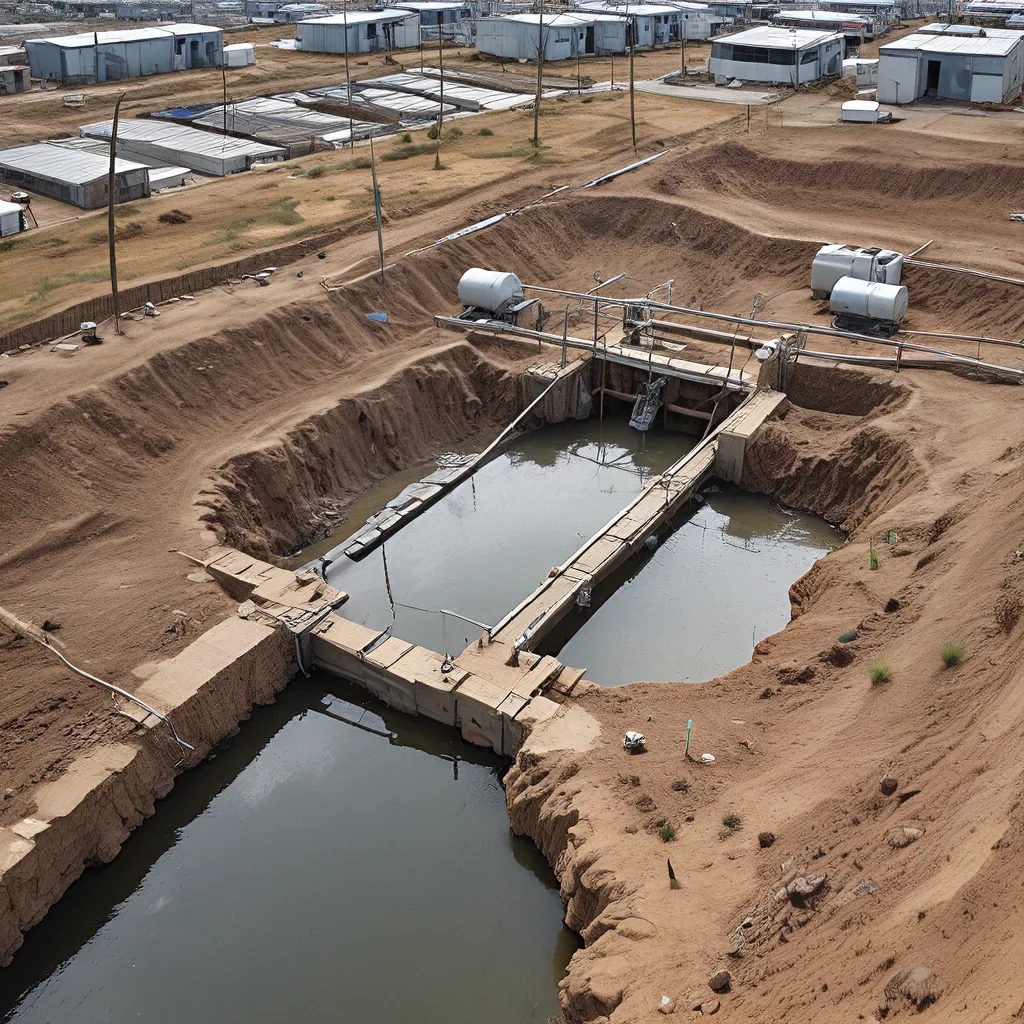
Alright, friends, let’s dive into the exciting world of decentralized wastewater systems! I know, I know, it might not sound like the most thrilling topic at first. But trust me, once you understand the incredible potential of these systems, you’ll be as giddy as a kid on Christmas morning.
Let’s start with the basics. Decentralized wastewater systems are the unsung heroes of the waste management world. Instead of funneling all that dirty H2O into a big, centralized treatment plant, these systems handle the dirty work right at the source – in your backyard, your neighborhood, your community.
And let me tell you, these systems are no slouches. They can convert organic waste into biogas to satisfy the energy demands of the local residents. That’s right, your household waste can power your home! Talk about a win-win scenario.
But the real magic happens when you start to consider the climate benefits. By capturing that biogas and putting it to use, we can reduce methane emissions and offset the use of fossil fuels. It’s like having your own personal carbon-sequestering machine right in your backyard!
Now, I know what you’re thinking – “But Tao, how do these decentralized systems actually work?” Well, my friends, let me break it down for you.
Designing the Optimal Decentralized System
The key to unlocking the full potential of decentralized wastewater systems lies in optimizing the flow of biogas between the production and consumption sides. It’s all about finding that sweet spot where the biogas supply matches the demand.
First, we need to get a solid understanding of the biogas consumption patterns in the local community. Are there certain times of day or year when demand spikes? How much biogas do households, businesses, and agricultural operations need on average? This data is crucial for designing a system that can keep up with the ebb and flow of usage.
On the production side, we need to tailor the biogas generation to match that demand as closely as possible. This involves fine-tuning the organic waste feedstock, managing the fermentation process, and ensuring there’s enough storage capacity to meet those peak usage periods.
Studies have shown that by adjusting the biogas flow rates on both the plant and user sides, we can achieve a consumption-to-production ratio close to 1. This means we’re minimizing those pesky biogas losses and maximizing the climate benefits.
But it’s not as simple as just setting it and forgetting it. Oh no, my friends. We’ve got to stay on top of those operational parameters, constantly monitoring and tweaking to keep things running smoothly. It’s like being the conductor of a symphony – every little adjustment can make a big difference in the final performance.
Unlocking the Climate Benefits
Now, let’s talk about the real reason we’re all here – the climate impact. Because when you get this decentralized system dialed in just right, the results are nothing short of jaw-dropping.
Replacing fossil fuels with that locally-produced biogas is a game-changer. Studies have shown that nationwide deployment of these systems in China could contribute a whopping 37% reduction towards their global climate commitments. And that’s just scratching the surface!
But it’s not just about swapping out dirty energy sources. Oh no, these decentralized systems also reduce methane emissions from waste management practices. By capturing that biogas and putting it to use, we’re essentially turning a major greenhouse gas contributor into a valuable resource.
And let’s not forget about the circular economy benefits. When you integrate these decentralized systems into the local agriculture and manufacturing sectors, you start to see some truly remarkable synergies. Waste becomes a valuable input, nutrients get recycled back into the soil, and the whole community thrives.
Overcoming the Challenges
Now, I know what you’re thinking – “This all sounds great, Tao, but what about the challenges?” Well, my friends, I won’t sugarcoat it. There are definitely some hurdles to overcome, but nothing that a little innovation and determination can’t handle.
One of the big ones is feedstock logistics. Gathering all that organic waste from scattered rural communities can be a logistical nightmare. But research is showing that by getting creative with co-fermentation and regional planning, we can optimize those supply chains and ensure a steady flow of high-quality feedstock.
And then there’s the whole operational dance we mentioned earlier. Keeping those biogas flows in perfect harmony takes some real skill and dedication. But hey, that’s where the professional biogas service providers come in. With the right training and support, we can empower local communities to become biogas wizards.
The Future is Decentralized
Alright, folks, I hope I’ve convinced you that decentralized wastewater systems are the way of the future. These unsung heroes of the waste management world are poised to transform the way we think about energy, climate, and community.
So, what are you waiting for? Let’s dive in and unlock the full potential of these systems! With a little creativity, a lot of determination, and the right support, we can build a cleaner, greener, and more sustainable future for all.
Who’s with me?